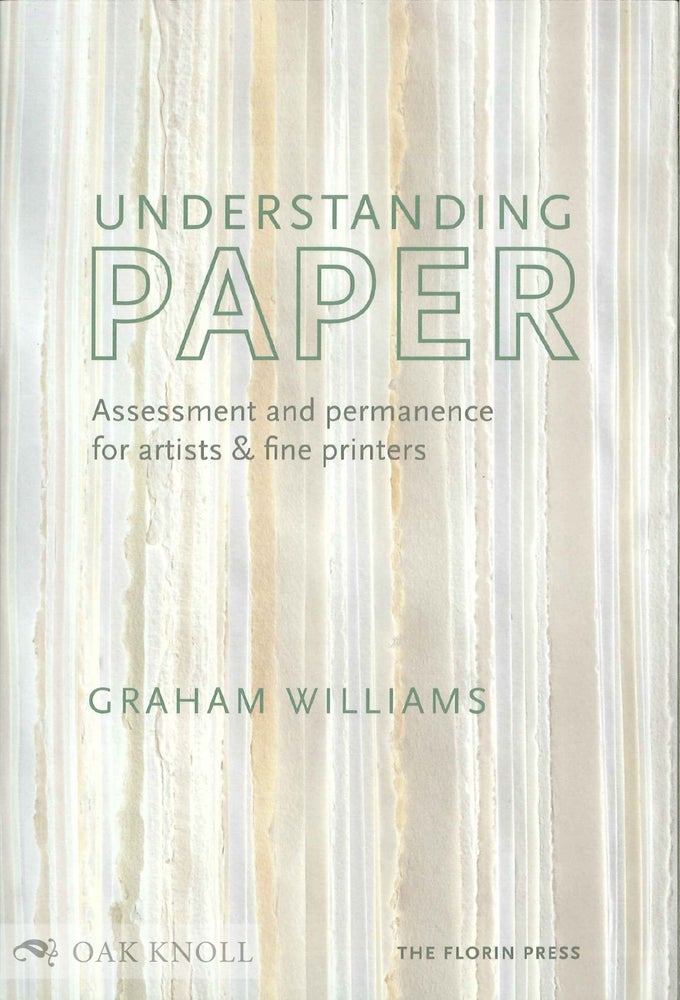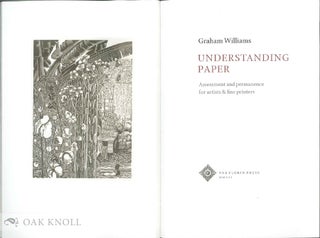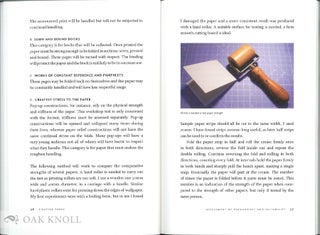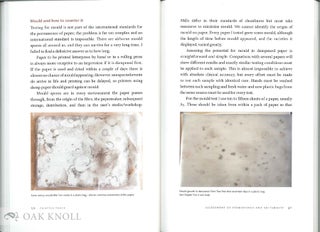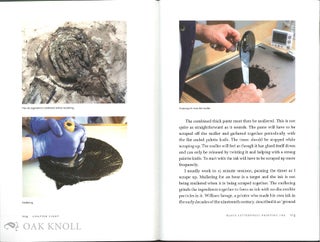UNDERSTANDING PAPER: ASSESSMENT AND PERMANENCE FOR ARTISTS & FINE PRINTERS.
- Kent, United Kingdom: Florin Press, The, 2021.
- 8vo
- paperback
- 134 pages
Price: $22.50 other currencies
Order Nr. 136648
First trade edition. A fine copy. Typeset and designed by Susan Wightman at the Libanus Press. Printed by Gomer Press Ltd, with 23 illustrations, mostly in colour.
We who draw, paint or print by any method must judge papers aesthetically and for their suitability for our way of working. We, and those who look after our work, can assess papers ourselves, including whether they may have a long life.
In this book there is no intent to persuade anyone to use or avoid any individual paper. It is definitely not a list of papers for others to follow as any list would soon be out of date. It is about how we can make our own assessments of three distinct attributes of paper - aesthetic, practical and permanence.
Making choices requires more information than cost and how it looks.
Our initial choice will be made by sight and touch. Too often it can be made to save costs. If what we make is to be sold, the cost of good paper will be a fraction of the price we ask for it. If we value our work we should have respect for what it sits on. We should know more and beware - all that is deckled is not gold!
Aesthetic qualities are discussed first, followed by a description of the five published international standards for the permanence of paper. These are shown to be insufficient for our purposes as they were formulated for a different need. We can learn from science about the longevity of paper but there is no such thing as a guarantee that a paper will last for a thousand years as some already has. However, science does suggest which qualities we should consider and test.
Thirty-four of the papers involved in A Collection of Printing from Woodblocks were assessed for this book. These include fourteen European handmade papers, a dozen mould-made papers and eight machine made papers. Half the papers were analysed by two independent laboratories for this book, some extensively. Laboratory testing is too expensive for us to commission on a regular basis. The way forward is with reliable tests that we can carry out in a studio or workshop.
Much of the book is concerned with what we can assess ourselves. Some tests use very little equipment and are accomplished in a matter of minutes. Others need equipment that is both readily available, affordable and take a little longer. In all there are nine assessments and tests.
Both the laboratory and my own assessments were sent to all the papermakers. Some responded responsibly with candour and in one case significant changes were made by a papermaker. Other producers reacted in different ways, a minority believing silence was in their best interests. A couple of papers even confounded the scientific analyses. Surprisingly a handmade and a machine made paper both tested differently from their published descriptions. Potential scandals were revealed by scientific detection, and averted.
One test that is not a part of any of the international standards is the presence of mould. Paper is dampened for fine printing and is frequently kept damp in plastic bags. Mould spores are all around us and in the plastic bags. Life can get in the way of printing schedules, delays can mean that papers mould, and must be discarded. Some papers grow more mould than others and this is something that we must be aware of. The text describes ways of protecting dampened paper against mould.
Most of those who use fine papers have a loyalty to individual papermakers or brands. Subsequent makings of the same paper are not necessarily identical to the first making. When stocking paper or buying for an important project these tests can avoid potentially expensive and even embarrassing problems. Every artist and artisan should be aware of the qualities of the paper they use.
Whatever paper a printer chooses it calls for an ink that will print with excellence. A last chapter explores how commercial printing ink can be altered to make it more suitable for hand letterpress printing on dampened paper.

